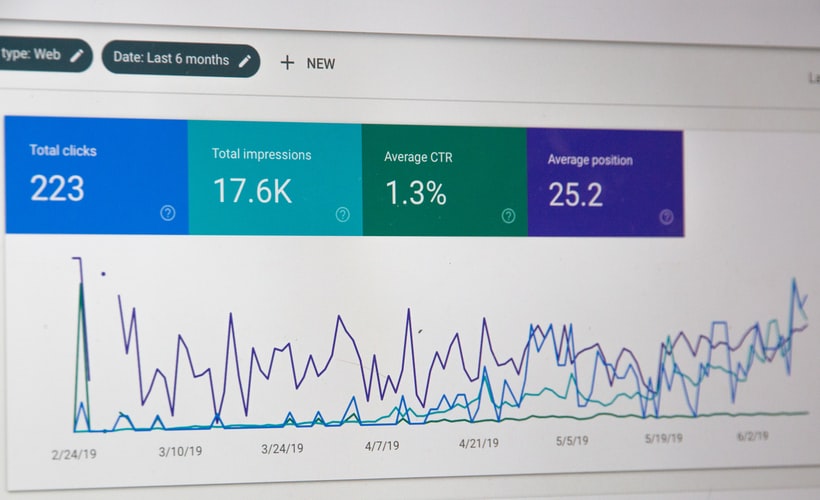SEO
Responsive Design vs. Adaptive Design: What’s the Best Choice for Your Business?

Since mobile devices generate more and more web traffic each day, you need to make sure that your website is designed to cater to their needs.
Nowadays, people use various devices to access the internet and browse it on numerous screen sizes. That’s why web and app designers nowadays need to keep all of these users in mind when designing a product.
Most commonly, there are three approaches a business can take to ensure that their website or app can be accessed on various devices. These include responsive design, adaptive design and standalone mobile design. That being said, deciding on the standalone mobile design is probably the least common route.
But before you decide on a specific design, you should really learn more about the difference between responsive and adaptive design to see which one will work best for you.
Additionally, you should make sure to find a quality web design agency you can rely on. As an example, you can find excellent New York web design agencies to help you out.
Responsive design
Simply put, a responsive design is a design that’s created to respond to variations in browser width. This is achieved by adjusting all of the design elements’ placement to fit the available space.
Responsive websites have the ability to respond to the screen size and adapt to it automatically. This is easily achievable by using a fluid grid, flexible images and a responsive navigation menu.
What this means is that a responsive design allows developers to create a single website that will be able to adjust according to the screen size it’s being browsed on.
Therefore, if you open a responsive website on your mobile device, you’ll be able to browse it the same way you would have if you opened it on your desktop.
This is due to the fact that a responsive website design will automatically respond to the amount of the available browser space and adjust its layout accordingly.
Advantages of responsive design
As mentioned previously, a responsive design requires a single version of the website to be created. That’s why responsive designs are usually quite cheaper to make, as they generally require less time, especially when building your website from scratch.
Websites that feature a responsive design are also easier to maintain or update because every change made will instantly apply to the entire website. They also offer a consistent user experience, as they will look and perform the same regardless of the device being used to access them.
Moreover, responsive websites use a single URL, no matter the device they’re being browsed on, which entirely eliminates the time wasted on redirection. And since a responsive design uses a single website and a single URL, having this type of website will also positively affect your SEO, which is extremely important to note.
Disadvantages of responsive design
On the other hand, a responsive design also carries some disadvantages.
Since a responsive design entirely eliminates redirection to a device-specific design, this type of website generally has a slower loading speed. And since loading speed plays a huge role in UX, this is definitely something to think about.
Additionally, while it is significantly cheaper and faster to create a responsive website when building it from scratch, it’s an entirely different story if you already have a website.
Oftentimes, it’s nearly impossible to implement a responsive design in an already-existing website, which may prompt an entire website overhaul. Needless to say, this won’t be either cheap or fast.
Finally, if a website with a responsive design features any type of ads, they may not always scale the same as the website does, which may affect the overall aesthetics.
Adaptive design
The adaptive website design is also commonly referred to as the “progressive enhancement of a website.”
Unlike responsive design, adaptive design focuses on creating multiple layout sizes of the same website. Usually, adaptive designs feature six fixed formats that include 320, 480, 760, 960, 1200 and 1600 pixels and respond to the most commonly used screen sizes.
So, in other words, instead of scaling the website’s content to fit the browser width – like in the responsive design, adaptive design recognizes the screen size and chooses one of the fixed formats that’s best suited for that particular screen size.
You can easily find design companies that excel in creating such website designs, like this design agency Chicago, if you feel like this type of design is better suited for your business.
Advantages of adaptive design
One of the biggest advantages of adaptive design is the fact that it leaves designers enough room to create specific UX based on the particular needs of the device in question.
So, unlike the responsive design that features a consistent UX across all platforms, adaptive design chooses the best one for a particular platform.
On top of that, adaptive design is far easier to implement on an already-existing website since designers will basically be creating new versions of the same website.
Moreover, an adaptive design usually outperforms the responsive one in speed tests, even with the necessary redirection latency. This is due to the fact that adaptive designs feature better-optimized loading speeds for each version of the website, unlike the responsive design.
And considering the fact that loading speed plays a huge role in UX, it becomes quite clear why having a faster-loading website is generally better for businesses.
Disadvantages of adaptive design
Finally, we must also discuss the disadvantages of an adaptive design.
As previously mentioned, creating an adaptive design will require more time and resources. So, one of the biggest disadvantages of an adaptive design is that development costs can get quite high.
Additionally, unlike with the responsive design, where maintenance and updates were quite seamless, updating and maintaining an adaptive design will also require more work.
This is due to the fact that with an adaptive design, you won’t be changing things on a single website, but you’ll also have to implement the same changes across all the different versions of the said website.
In the end, an adaptive design is not as favorable as a responsive design when it comes to SEO.
Since the majority of search engines don’t rate similar content that’s spread across multiple URLs the same way as they do content on a single URL, this may somewhat hinder your SEO efforts.
To sum up
Knowing all of this, there’s really no clear-cut answer when it comes to choosing a design that’s best for your business.
Since both of these design options are so different, and both have strong advantages in their own right, choosing the best one for your business will depend on your needs, resources and preferences.
Also, whether or not you already have a website will play a key role in determining which design to go with.
Businesses that already have a website could potentially benefit more from going with an adaptive design.
On the other hand, businesses that are yet to develop their website may potentially benefit more from creating a website with a responsive design.
So, make sure you take some time and really consider your business needs when it comes to choosing the right design for your website.
SEO
What Is SEO Cannibalization And How To Avoid It?

The management of the content and the positioning of a portal is decisive to convince Google, and it is especially significant when we talk about businesses focused on online sales
In the digital world in which we live, having a website with well-positioned content is decisive in the good work of our business, and especially if we are oriented to the sales sector.
Apart from having well-written content, we must work and delve into SEO, in order to position in an outstanding way those keywords that are beneficial for our commercial and professional interests.
In this text we will give some basic guidelines, although it is always convenient to consult with an SEO Agency, and especially if our portal uses that commented CMS. One of the most common and effective, and also to manage these SEO cannibalization issues.
In this sense, we must take into consideration that there is a fine line that can unbalance doing it right or doing it wrong. If we stay in this last aspect, one of the frequent mistakes can be SEO cannibalization. This occurs when we try to position a single keyword and we see that in the result of the positioning of our content only one page is positioned, while the rest, with that same keyword, do not succeed.
This is because Google will never position all that content with the same keyword, since, let’s say, it is detecting a kind of ‘spam’. Google detects that we are ‘confusing’ users. The solution is to vary those keywords, with the aim of achieving better positioning and reaching a greater number of users.
This SEO cannibalization is a mistake that is made with some frequency and unconsciously. Normally, this situation is reached due to a lack of control over which keywords are being used, and positioning, when creating that content. But it does not always happen when managing content, other examples are usually when including an article in several categories (in the case of online stores) or when we do not have internal content well linked.
Google, in the end, ends up detecting these small structural errors and penalizes us in the face of users. Bugs that are not of importance as long as they are fixed as soon as possible, and it is not a complicated task.
We are not facing a complicated mission because Google itself has tools that help us solve these setbacks, although in the digital market we can find many other applications (paid, yes) that will help us not fall into this SEO cannibalization. We must go to this resource when we have a portal of a certain size, since solving this through Google Search Console is a more difficult task. In any case, these tools will find us what content we should review when trying to position the same keywords and what sites we should review to correct damaged links.
Analyze and fix
Once we have this analysis, it will be time to apply the solutions to this SEO cannibalization that our web portal suffers.
And what common solutions can we employ? Apart from having professionals who advise us correctly, the basic solutions focus on mixing the contents in a single page that positions us, without complications, as a keyword. And without forgetting to carry out the convenient 301 redirect of the content that we stop using. Otherwise, we correct a problem, but we generate another that does not interest us.
Another solution that we can apply is to use the canonical tag, indicating to Google what content we are interested in positioning so that it can be indexed in its search engine.
But we can also keep both contents, but with some other changes, such as redoing the text of one of them so that there is no keyword confrontation in the eyes of Google. This, on the contrary, requires accurate writing in terms of SEO terms, in order to achieve positioning of both content.
In this way, with these techniques, we manage to eliminate the problem of SEO cannibalization in our portal. Finally, another aspect that is worth mentioning is the CMS that is being used, since the market offers us a diverse range, but not all of them are equally perfect.
If we focus on WordPress, one of the most used when creating a web page, we will not find any problem, since its internal search engine allows us to know which texts use the same terms in the headlines; allows us to have SEO applications installed that advise us on the use of keywords; we can make redirects; use the canonical tag and save different versions of content.
These are some essential measures to apply if we want to keep our portal prosperous, especially if we are talking about stores, since SEO plays a decisive role in the increase or decrease of our sales.
SEO
What is content marketing and the role of plagiarism in it?

Content marketing
Content marketing is a planned tactic to create and distribute valuable, relevant, and consistent content after plagiarism check to attract and hold a potential audience. It drives profitable customer action as well. In the content marketing approach as a substitute for pitching your products or services, you provide relevant and useful content to your customers to solve their questions.
Copyright laws in content marketing
Whenever you write something, you own its copyrights automatically. Under any circumstance, no one can take your work without your permission. If they violate copyright laws, they will have legal repercussions. Likewise, it is important to go through a plagiarism check to avoid copyright violations in your content marketing strategy.
Take inspiration in content marketing
You can take inspiration from a well-written blog post or article to enhance your content marketing strategy. You can even use different ideas of articles as your starting point and write a response post. However, don’t forget to cite and link back to that blog and its author.
Unique content and content marketing
A good content marketing strategy is the recurrent creation and push of new content. If you are creating a huge number of articles, then avoid copying someone else’s ideas. “Borrowing” content seems a very appealing solution when deadlines are hanging over your head, but it is harmful to your content marketing strategy. Unique content has the potential to enhance your SEO and google rankings. According to SEO services providers, one of the most common mistakes that website owners make is failing to check the originality of content that is being uploaded to their website. So before handing over your piece of creation to the audience, go through a plagiarism check.
Role of plagiarism in content marketing
Plagiarism harms your credibility and causes trouble for the website. If you lose clients because of your plagiarism, don’t think to be sticking around much longer. There are legal consequences if you get caught plagiarizing by Google. When it comes to content marketing, the most important rule is that your content MUST be unique. You can take an idea or even a topic but present it differently. Violating copyright law has plenty of repercussions, and publishing new and fresh content brings many benefits. So make sure that you always create unique content from scratch.
Plagiarism Ruins the Credibility
Plagiarism is a main concern of the content marketing world. After stepping into the market, you might face a serious issue if you copy content from other websites.
- If you are copying the main idea and structure without rephrasing it properly, this can raise the issue of plagiarism. Your target audience won’t find such content attractive.
- If you fail to add credits for the information, it will lead to plagiarism in your content. Such content has no potential to create a sense of new ideas in the mind of your consumers. They will take it as “borrowed content,” and you will lose your trustworthiness.
- Plagiarism can be present in videos, pictures, graphics, and music. Google will penalize such content, and SEO ranking will drop immediately.
- Plagiarized content gets blocked, and then it will destroy your reputation among people and different search engines.
- Plagiarism also causes safety issues for your content. If you are not putting effort into plagiarism checks before publishing your content, it will go against your brand. You will lose your followers and their trust in your brand’s reputation. Therefore, you must take responsibility for guaranteeing that every piece of writing is authentic and unique.
How to remove plagiarism
You can use a plagiarism tool to detect and remove plagiarism from any of your content.
Searchenginereports.net
It is one of the best free online plagiarism checkers that allows you to paste up to 1500 words for plagiarism checks. This plagiarism detector facilitates you with several grammar and spelling correction options other than the facility to check plagiarism. This plagiarism tool gives you sentence-wise results and options to rewrite the same lines. It provides results in percentages and allows you to download the similarity index to prove your document’s uniqueness.
Benefits of plagiarism-free content
Unique and new content brings a lot of welfares for your content marketing strategy, such as:
Attracts Audience
For successful content marketing, you have to come up with unique and new pieces of content. It will give the audience a reason to choose your website over competitors. For this purpose, you can use a plagiarism checker for detecting and removing plagiarism from any of your content.
Improves Search Engine Ranking
Content marketing is important for search engine optimization. SEO helps your site’s pages to achieve a high ranking on search engine result pages. The fresh content of your site plays a crucial role and improves search engine ranking immediately. Search engines select top rankings for the sites with plagiarism-free content.
Creates Backlinks
If your content is plagiarism-free, it can help you to build backlinks for your website. Backlinks play an important role in uplifting your search engine visibility. You can create a powerful impression with unique ideas that will automatically urge the high-authoritative sites to provide you backlinks.
SEO
Why quality content is more important than ever – How to optimize it?

Content is a very generic term that tells about any text, videos, images, or other interactive elements you see on the web. Content is the only thing that provides value to a website. A website filled with content gives visitors a reason to stay and engage with it. A site having an empty parking space would have zero traffic as visitors would have no reason to engage with it. Now many people ask us why quality content is important for websites, which is why we have listed out the most popular reasons in this post.
Why is quality content so important these days?
Gone are the days where you copied content from other sources and created a new article for your site. Today this kind of content has no value and would be rejected by the search engine. You have to focus on creating unique and high-quality content to see your website reach the top. Below we have listed some of the detailed reasons to help you understand the need for quality content.
Content informs your audience
Content is important for your site because it informs your target audience about your brand and business. Good quality content answers all kinds of questions that are in the mind of the potential audience. The more information you have in your content, the better would be the site’s engagement rate.
Good quality ranks in Google
A site having no content or bad quality content would never be ranked in Google’s search listings. Every web admin dreams of seeing their site on the top shelves, and if you want the same, you need to publish high-quality and plagiarism-free content. You can get this kind of content with the best paraphrasing tool.
Quality content can earn links from other sites
Link building is very important for search engine optimization. If you want to win the higher ranks, you need to earn links from high authority sites working on your niche. Now, these websites would only be interested in you if you have high-quality content.
Content can be shared on social platforms
All kinds of businesses today have and should have social media accounts. You can easily share your content on social media so that you can win traffic from these platforms. Content is the only element on your site that you can share. You can get shareable content with the help of a well-reputed rewrite tool!
Quality content earns more conversions
Conversions are very important for a website business. Good quality content can easily win the target audience’s trust and turn them into potential and loyal customers.
Quality content builds your authority
With the help of good quality content, you can establish your authority in the search engine’s eyes and the target audience. It also helps you own the niche you are working in. without good quality content, your website will be useless.
Good quality content helps in search engine optimization
Search engine optimization is the practice that helps you optimize your site for Google. You can get a lot of help in optimizing your website if you have good quality content. Stuffing keywords, adjusting links, adding images is all very important in seo.
How to create and optimize content for the search engine?
Creating content, as we have told you before, is not a cup of cake. You need to be an expert in writing or should have the budget to pay a professional writer. If you don’t have the expertise or budget to create content, you can also use paraphrasing tools to rewrite article. Using the best paraphrasing tool can help you get free and good-quality content.
Creating content has become simple and easy with the help of a paraphrasing tool or rewording tool. However, you still have to optimize it for the search engine. Below we have listed some tips which would help you optimize content created by the paraphrasing tools.
Tips to optimize website content for Google!
Follow these tips if you want to see your site on the top ranks:
- Check your content for plagiarism and remove all forms of duplication from it.
- Find target keywords that are related to the niche you are working on. It is important to stuff keywords if you want the search engine to recognize your content and the niche.
- Add relevant images with the textual content. Today the audience is more interested in visual content, so you have to make your site visually attractive. This would also win the interest of the search engine.
- Focus on the quality of the content. After using the paraphrasing tool to get fresh articles, you must proofread them with powerful resources like Grammarly. This would help you find and remove all human errors from your content.
- You also have to set a proper structure of your content to optimize it for the search engine. It should have proper headings, subheadings, and points.
These are some basic content optimization tips that would help you win a better position in the SERPs.
-

 Apps1 year ago
Apps1 year agoWhy is Everyone Talking About Hindi Keyboards?
-

 Social Media1 year ago
Social Media1 year agoWho is Rouba Saadeh?
-

 Apps1 year ago
Apps1 year agoThings you need to know about Marathi keyboard today
-

 Apps1 year ago
Apps1 year agoStuck with Your default Bangla keyboard? Isn’t it time for a change?
-

 Social Media1 year ago
Social Media1 year agoMati Marroni Instagram Wiki (Model’s Age, Net Worth, Body Measurements, Marriage)
-

 Entertainment1 year ago
Entertainment1 year ago12 Online Streaming Sites that Serve as Best Alternatives to CouchTuner
-

 Games11 months ago
Games11 months agoTop 7 Popular Puzzle and Card Games for Relaxing Your Brain on Mobile, Featuring Solitaire
-

 Entertainment1 year ago
Entertainment1 year agoMovierulz Website: Movierulzz 2021 Latest Movies on Movierulz.com
